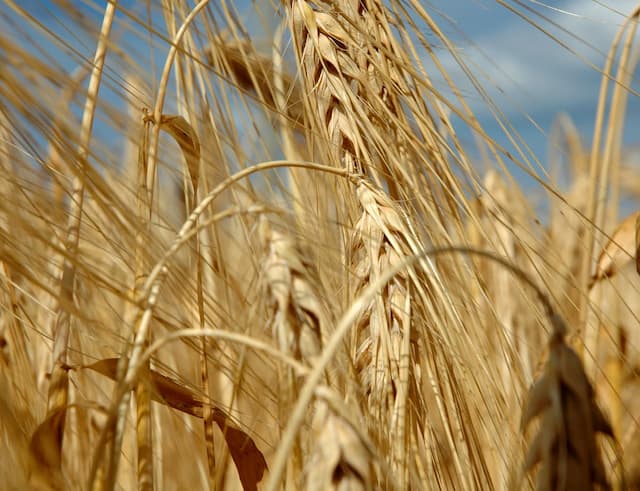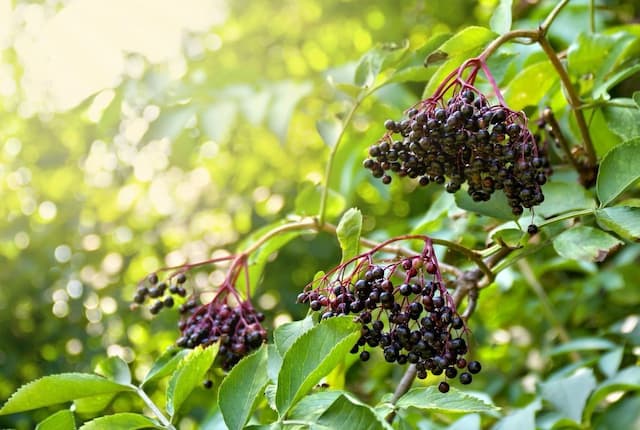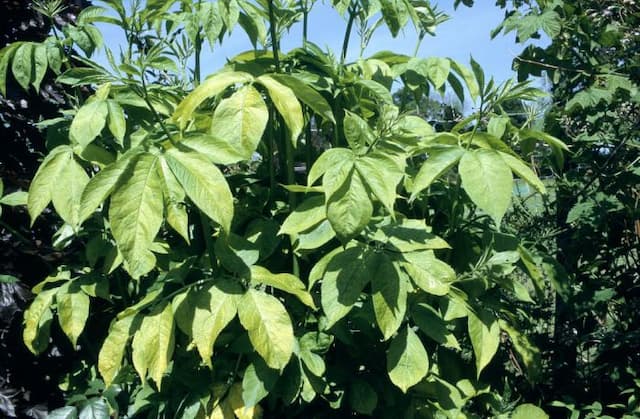Burkwood Viburnum Viburnum × burkwoodii 'Fulbrook'

ABOUT
Viburnum × burkwoodii 'Fulbrook', commonly known simply as Burkwood Viburnum, is an ornamental plant known for its attractive foliage and fragrant flowers. The plant typically exhibits a dense, multi-stemmed, and rounded growth habit. The leaves of Burkwood Viburnum are glossy, offering a deep green hue that complements the landscape throughout the growing season. These leaves are broad, slightly toothed at the edges, and can have a leathery texture, which adds to their visual interest. One of the most striking features of the Burkwood Viburnum is its flower display. The plant produces clusters of aromatic blossoms that can be a delight to the senses. These flowers are usually small, tubular, and creamy white, and they come together to form spherical clusters known as inflorescences. As the blooming season progresses, these flowers often transform into ornamental red berries that mature to black, adding a new layer of visual appeal. The overall impression of the Burkwood Viburnum is one of a lush and vibrant ornamental shrub with a seasonal progression of color and form, from the showy blooms in the spring to the rich leaf color in the summer and berry display towards the fall. The plant can serve as a beautiful addition to gardens and landscapes, offering both aesthetic and sensory experiences.
About this plant
 Names
NamesFamily
Adoxaceae
Synonyms
Burkwood Viburnum, Burkwood's Viburnum, Fulbrook Viburnum
Common names
Viburnum × burkwoodii 'Fulbrook'.
 Toxicity
ToxicityTo humans
Viburnum x burkwoodii 'Fulbrook', commonly known as Burkwood Viburnum, is not known to be toxic to humans. Generally, members of the Viburnum genus are not considered poisonous, and there are no well-documented cases of human poisoning from consuming parts of these plants. However, it is always possible for individuals to have allergic reactions, and it's advisable to avoid ingesting plant material that is not known to be edible or is not prepared properly.
To pets
Burkwood Viburnum is not typically toxic to pets. Members of the Viburnum genus do not possess known toxins that cause systematic poisoning in animals. However, as with humans, individual pets could potentially have a sensitivity or allergic reaction to the plant. If a pet were to ingest a large amount of Viburnum, it might experience mild gastrointestinal upset as with any non-food item. If you suspect your pet is having a reaction to this plant or any other, it is best to consult a veterinarian.
 Characteristics
CharacteristicsLife cycle
Perennials
Foliage type
Deciduous
Color of leaves
Green
Flower color
White
Height
4-7 feet (1.2-2.1 meters)
Spread
4-7 feet (1.2-2.1 meters)
Plant type
Shrub
Hardiness zones
5
Native area
Hybrid
Benefits
 General Benefits
General Benefits- Aesthetic Appeal: Burkwood Viburnum's lush green foliage and abundant fragrant flowers enhance the visual attractiveness of gardens and landscapes.
- Wildlife Attraction: The flowers offer nectar for pollinators, while the berries attract birds and other wildlife.
- Seasonal Interest: Provides year-round interest with spring flowers, summer berries, autumn color, and a structured winter silhouette.
- Low Maintenance: Once established, Burkwood Viburnum requires minimal care, making it suitable for gardeners of all skill levels.
- Hedging and Screening: Can be used to create natural hedges or privacy screens due to its dense growing habit.
- Versatility: Adapts to a variety of soil types and conditions, including partial shade, making it a versatile choice for different garden settings.
 Medical Properties
Medical PropertiesThis plant is not used for medical purposes.
 Air-purifying Qualities
Air-purifying QualitiesThis plant is not specifically known for air purifying qualities.
 Other Uses
Other Uses- As a natural fence: Viburnum x burkwoodii 'Fulbrook' can be planted in rows to create a living fence that provides privacy and a visual barrier in the landscape.
- Sound barrier: The dense foliage can help to dampen noise, making it a good choice for planting along roads or between properties in urban areas.
- Windbreaks: The shrub can be used in rural and exposed gardens to reduce the impact of winds on more sensitive plants.
- Erosion control: With its extensive root system, it can help stabilize soil on slopes or in areas prone to erosion.
- Winter garden interest: The plant's evergreen leaves, and sometimes berries, provide visual interest in winter when other plants have died back.
- Habitat creation: It offers shelter and food to a variety of wildlife, including birds and beneficial insects.
- Photography backdrop: Its attractive flowers and foliage make it a popular choice for garden photographers seeking a picturesque background.
- Educational tool: It can be used in educational gardens to teach about plant breeding, hybridization, and ornamental horticulture.
- Theme gardens: It's ideal for inclusion in sensory gardens due to its fragrant flowers, or in a "white garden" where the blooms contribute to the color theme.
- Cultural significance: It can reflect cultural gardening practices or be incorporated in thematic gardens, such as those designed to reflect English cottage garden styles.
Interesting Facts
 Feng Shui
Feng ShuiThe Burkwood Viburnum is not used in Feng Shui practice.
 Zodiac Sign Compitability
Zodiac Sign CompitabilityThe Burkwood Viburnum is not used in astrology practice.
 Plant Symbolism
Plant Symbolism- Renewal: As Viburnum × burkwoodii 'Fulbrook' is a flowering shrub that blooms each spring, it symbolizes the idea of renewal and the start of a new cycle.
- Beauty: With its attractive flowers and pleasant fragrance, it is often associated with beauty and the appreciation of it.
- Protection: In some cultures, Viburnum species are believed to offer protection, possibly because of their dense growth which can provide shelter for wildlife.
- Survival: Given this plant's hardiness and adaptability, it also symbolizes the ability to endure and survive challenging conditions.
 Water
WaterBurkwood Viburnum should be watered deeply and thoroughly. For young plants, it's important to keep the soil consistently moist, so watering may be necessary once or twice a week, particularly in the absence of rain. Mature plants are more drought-tolerant and may require less frequent watering. A rule of thumb is to provide approximately one to one and a half gallons of water per square yard of soil every week during the growing season, adjusting based on rainfall and the specific conditions of your garden.
 Light
LightBurkwood Viburnum thrives best in full sun to partial shade. Ideally, it should receive at least four to six hours of direct sunlight a day but can also benefit from some afternoon shade in areas with intense sun. Placing it in a spot that gets morning sun and partial afternoon shade can help ensure it gets the light it needs without being overly stressed by the heat.
 Temperature
TemperatureBurkwood Viburnum is hardy in a range of temperatures and can handle winter lows down to about -10°F, making it suitable for USDA zones 5 through 8. The ideal growing temperatures for this plant range from 60°F to 75°F. Extreme temperatures above 95°F may stress the plant, especially if accompanied by drought conditions.
 Pruning
PruningPrune the Burkwood Viburnum immediately after flowering to maintain its shape and to promote next year's bloom. Pruning every year is not strictly necessary unless you are trying to control its size or shape. Minor shaping can be done to remove any dead or crossed branches, which will also help to improve air circulation throughout the plant.
 Cleaning
CleaningAs needed
 Soil
SoilBurkwood Viburnum prefers well-drained soil rich in organic matter with a pH of 5.6 to 6.6. A mix of loam, compost, and peat is ideal to maintain moisture and provide nutrients.
 Repotting
RepottingBurkwood Viburnum does not typically require frequent repotting as it is usually grown in the ground; transplantation is only necessary when the shrub has outgrown its space.
 Humidity & Misting
Humidity & MistingBurkwood Viburnum thrives best in outdoor conditions where humidity is naturally regulated and does not require specific humidity levels.
 Suitable locations
Suitable locationsIndoor
Keep in bright indirect light, ensure good airflow.
Outdoor
Plant in sun to partial shade, shelter from strong winds.
Hardiness zone
5-8 USDA
 Life cycle
Life cycleViburnum × burkwoodii 'Fulbrook', commonly known as the Burkwood Viburnum, begins its life cycle when a seed germinates in spring, given suitable moist soil and partial shade conditions. After germination, the seedling emerges and enters a vegetative state where it focuses on leaf and root development. As it matures into a young plant, it experiences a period of rapid growth where stems elongate, and a bushy habit starts to form. Once the plant is established and conditions are right, which typically takes a few years, it enters the flowering stage in late spring, producing fragrant white to pinkish flowers that attract pollinators. Following pollination, it develops berries in the summer that mature to blue-black in the fall, providing food for wildlife and completing the reproductive stage. The plant then goes dormant in winter, conserving its energy to restart the cycle in the following spring.
 Propogation
PropogationPropogation time
Spring-Early Summer
The Viburnum × burkwoodii 'Fulbrook', commonly known as Burkwood Viburnum, is traditionally propagated by softwood cuttings. This method is often performed in late spring through early summer when new growth is still tender but beginning to firm up. A cutting of about 4 to 6 inches (10 to 15 centimeters) is taken, with the lower leaves removed to expose a clear stem, which can then be dipped in rooting hormone to encourage root development. The prepared cutting is inserted into a pot with a well-draining soil mixture and kept under high humidity and indirect light until roots have established, which typically takes several weeks. Once rooted, the new plant can be gradually acclimatized to less humid conditions before being planted out in the garden.



![Elder [Black Tower]](/_next/image?url=https%3A%2F%2Fplants-admin.emdemapps.com%2Fimages%2Fplants%2F%2Fimages%2F604b5cad99578.png&w=640&q=75)





